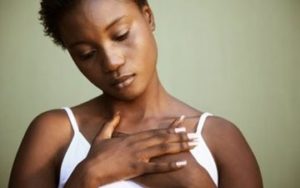
But the message isn’t fully getting across to women — or their doctors — the AHA says. The AHA says significant medical attention has been given to men in terms of detecting, preventing and treating heart disease, which indicates that there is still much work to do to save women from this condition.
The most common symptom of a heart attack, regardless of gender, is chest discomfort or pain. However, women are more likely to experience nausea, shortness of breath, vomiting and pain in the jaw or back. Shoulder and arm pain, which have long been recognized as heart disease symptoms, are twice as common in men. Women are also more likely to experience heart palpitations or a feeling of dread when having a heart attack.
Dr. Laxmi Mehta, director of the Women’s Cardiovascular Health Program at The Ohio State University, states that “despite stunning improvements in cardiovascular deaths over the last decade, women still fare worse than men, and heart disease in women remains undiagnosed and under-treated, especially among African-American women.”
Mehta was also the writing team leader for the first written work by the AHA that solely focused on heart disease and women.
In both men and women, heart attacks are often caused by blocked arteries. However, the blockage forms differently in women than in men. The AHA says that “compared to men, women can have less severe blockages,” but there is still significant damage in the arteries that carry blood to the heart. The AHA’s research group also concluded that the results of heart attacks among genders is the same. When there isn’t enough blood flowing to the heart for any reason, the likelihood of a heart attack is increased.
It is also important to note that if doctors are not properly diagnosing the causes of heart attacks in women, these physicians may not be giving their female patients the correct prescriptions and treatments after a heart attack. This means that women don’t receive the lifesaving treatments they need following a heart attack. For this reason, 26 percent of women die within a year of having their first heart attack, versus 19 percent of men. And 40 percent of the people who die suddenly from a heart attack or heart-related event are women, according to the AHA.
Additionally, women usually have smaller blood vessels than men. Women who suffer from heart attacks are often older than men who have heart attacks, and these women tend to have additional health conditions, such as high blood pressure and diabetes. Women who have high blood pressure are also more likely than men with high blood pressure to have heart attacks. And younger women with diabetes are four to five times more likely to have a heart attack than young men who have diabetes. Heart attacks can be particularly deadly for young women, who tend to be sicker than young men who suffer heart attacks. Young women who have heart attacks are also more likely to die while in the hospital.
Further research also indicates that women may not realize their tendency to have a heart attack, and could wait too long to seek medical attention. On average, a man who is having the first symptoms of a heart attack will go to the emergency room within 15 minutes. Women in the U.S., however, take more than two days to visit the doctor.
Mehta says that over the past decade, medical researchers have found that women and men’s hearts are significantly different. Mehta says that while this research has reduced the mortality rate of heart disease in women, “most heart disease research is done in men, so how we categorize it is based on men. We need more science in women.”


